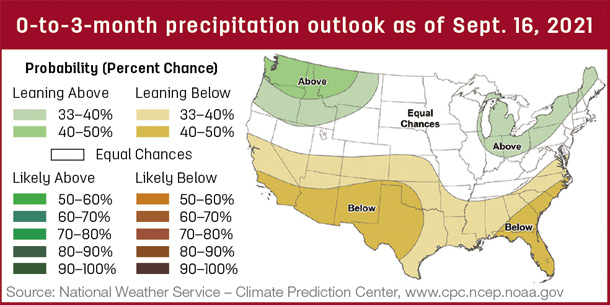Feeding hay is a common practice for many producers during the winter. When selecting hay-feeding sites, try to feed in areas with well-drained soils or in less productive areas of the pasture.
The wasted hay and additional manure left in these areas may help increase future forage production. The good drainage will help prevent the area from getting muddy if it rains a lot. Muddy feeding areas are hard on both people and cattle. Common methods of feeding hay in the pasture include unrolling the hay or feeding it in a hay ring, trailer or cradle.
When unrolling hay, it is important to just unroll the amount of hay the cattle will consume in a day. If the weather is bad, unrolling extra hay that can serve as dry bedding can be beneficial, especially if there are young calves in the herd. When done correctly, unrolling hay results in very little waste and is the preferred method of feeding hay for many producers. Hay can be unrolled with a simple unroller that attaches to the three-point hookup on a tractor. These unrollers don’t cost a lot and can pay for themselves in a few years. Additionally, the front-end loader with either a bucket or spear attachment can be tilted down and back and then used to unroll hay.

When using hay rings, trailers or cradles, be mindful of muddy areas that can develop around these feeders and the impacts they can have on future forage production. An area of reduced forage production is often left around these feeders that can be seen from the ground as well as from satellite images for a year or more. In general, versions of these devices that restrict access more with slanted bars, skirts or other features will result in less waste. It is also important to make sure there are enough rings, trailers or cradles being used to prevent crowding and fighting around these feeders.
It is important to remove plastic twine or net wrap from bales before feeding and pick up any that may have fallen off bales when moving them. Cattle will chew on these materials even when they are not associated with hay, and they can become lodged in the digestive tract, leading to reduced performance or death. Additionally, they can get wrapped around feet or legs, causing injury to the animal.







